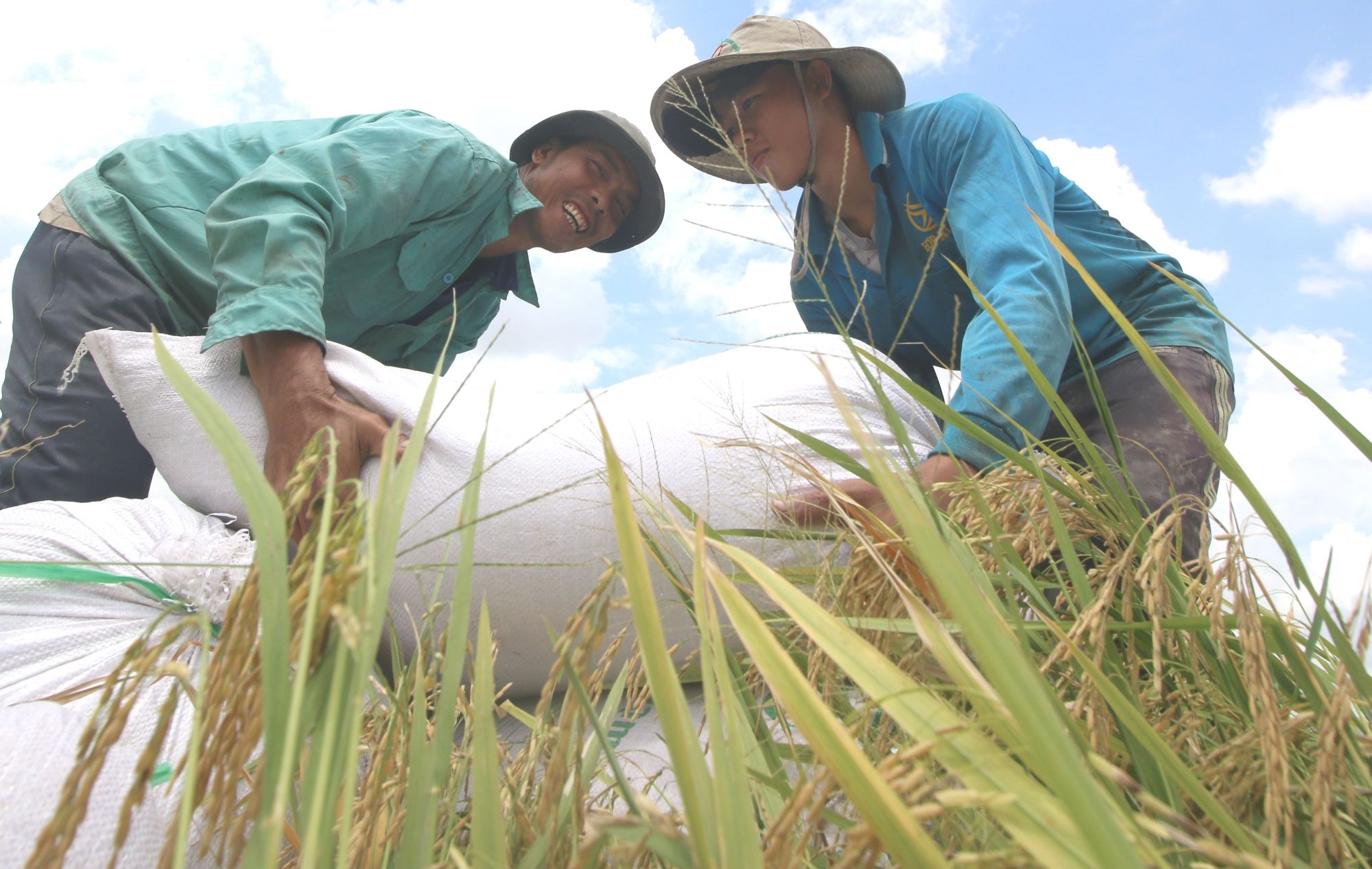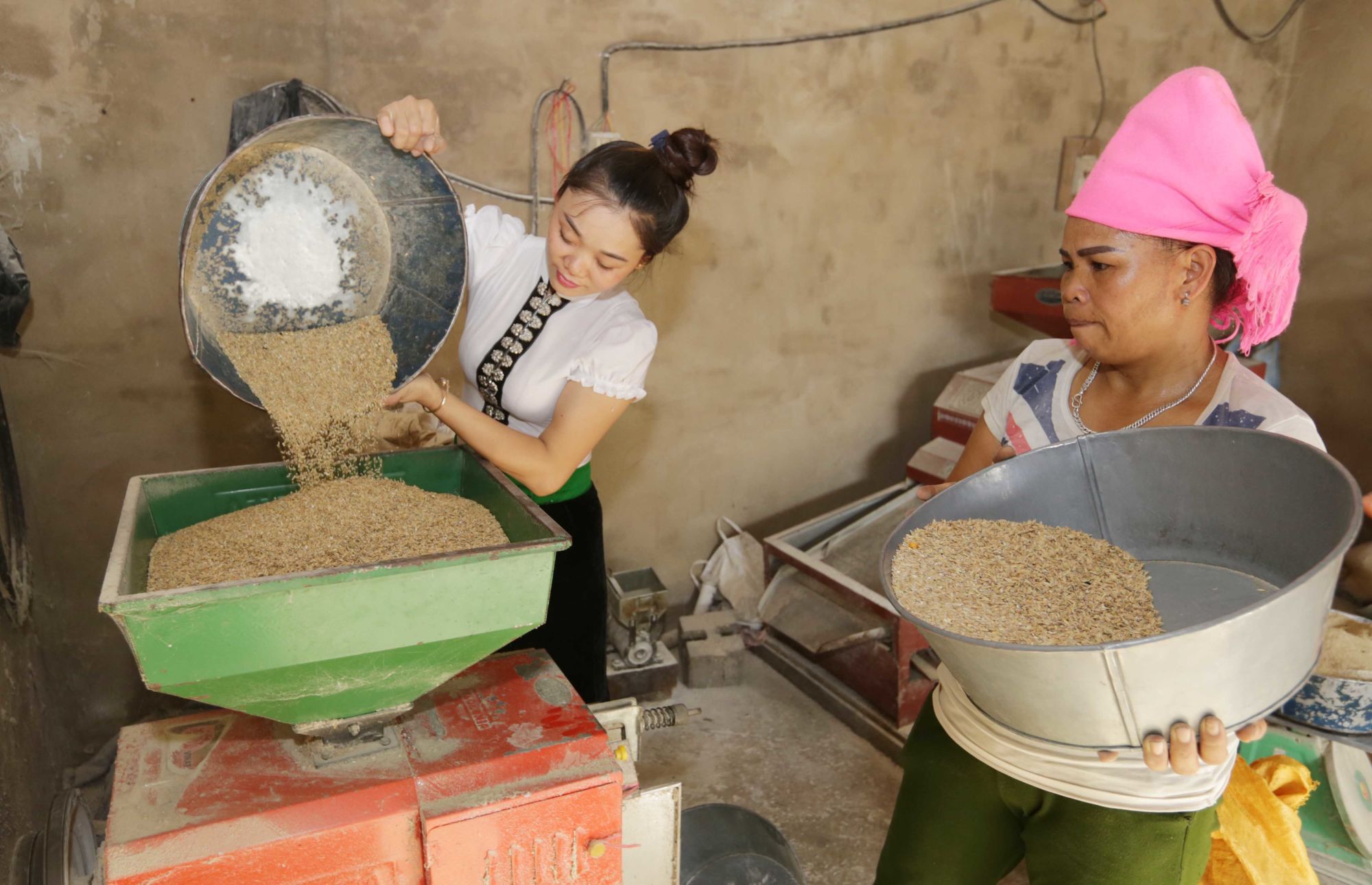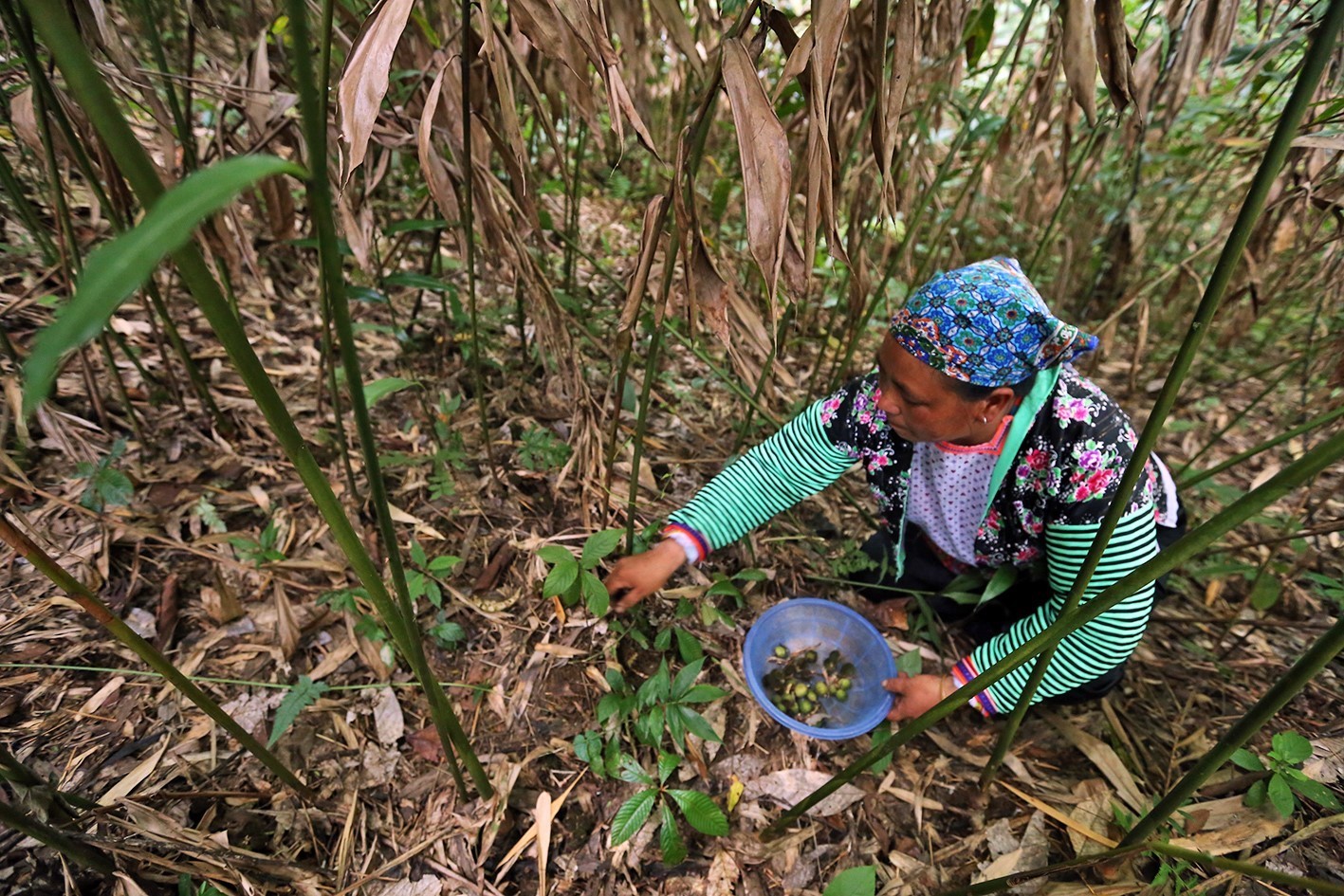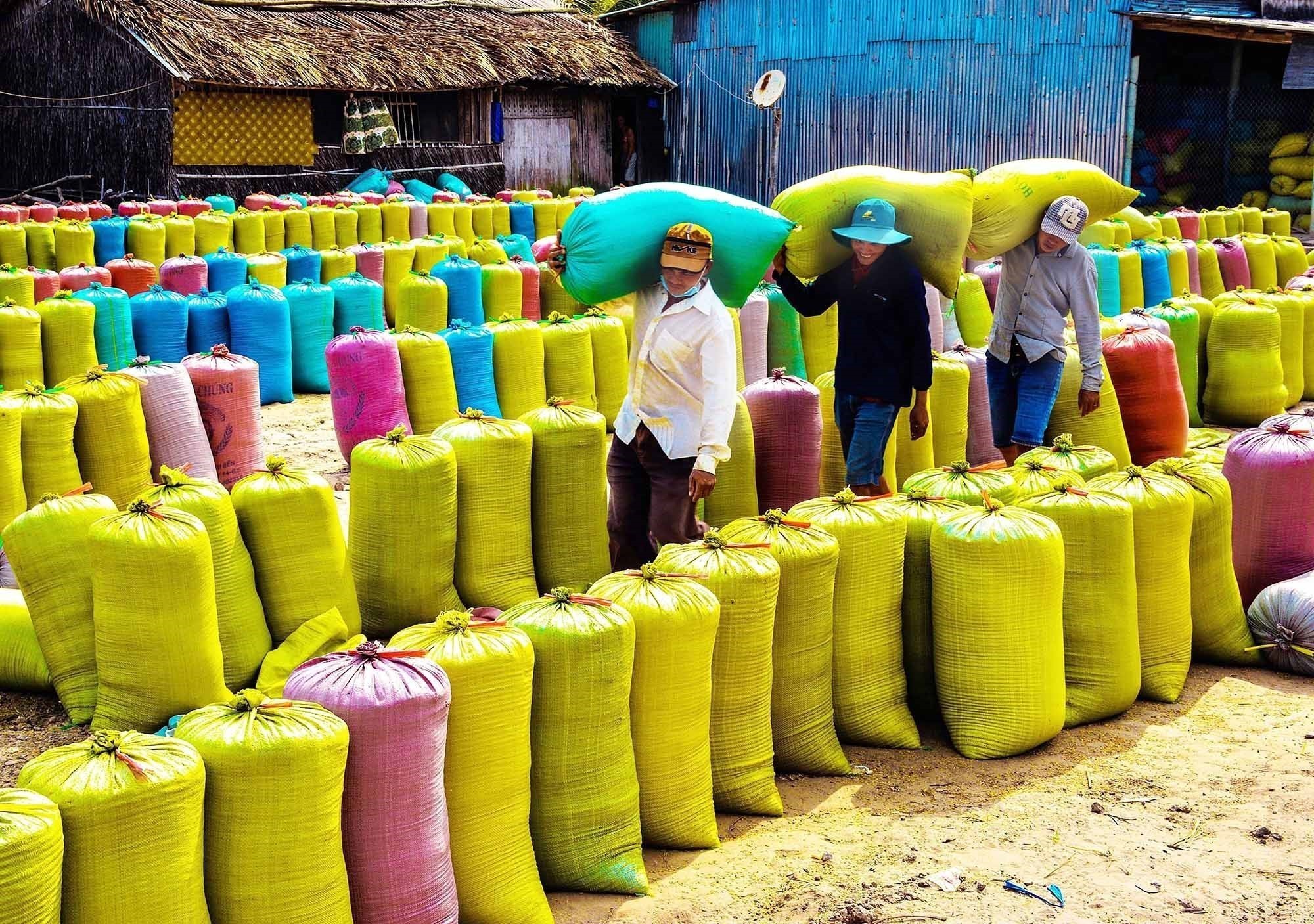In the first session of the Government on September 3, 1945, President Ho Chi Minh pointed out six pressing issues, and one of them was eradicating hunger. He repeatedly emphasised the task of ensuring food, clothes, housing and education for all people.
He said if the country obtained freedom and independence but its people still suffered from starvation or freeze, such freedom and independence would be worthless. The people understood the value of freedom and independence only when they had sufficient food and clothes.
Impressive achievements
Over the last three decades, poverty reduction has continually been a field with numerous impressive successes during Vietnam’s economic development process. Alongside fast economic growth, an array of poverty elimination policies have been carried out synchronously at all levels with funding from the Government, the community and international social organisations, thus considerably alleviating poverty in all regions across the country.
Getting rid of poverty has become the resolve of not only all-level authorities but also each deprived household. The poverty rate, as calculated according to per capita income, has declined sharply from 57 percent in 1990 to 13.5 percent in 2014.

In 2006, Vietnam declared its fulfillment of the Millennium Development Goal on eradicating extreme poverty and hunger, 10 years ahead of schedule (2015).
Talking about poverty alleviation attainments, Ngo Truong Thi, Chief of the Poverty Reduction Office at the Ministry of Labour, Invalids and Social Affairs, said although Vietnam has had to face a number of difficulties and challenges in terms of economy, society and natural disasters over the last three years, under the Party’s leadership, the National Assembly (NA) and the Government’s attention, and with efforts by the whole society, poverty reduction outcomes have been sustained.
In 2006, Vietnam declared its fulfillment of the Millennium Development Goal on eradicating extreme poverty and hunger, 10 years ahead of schedule (2015).
Thi noted in 2016 and 2017, the poverty rate fell 1.8 percent on average, a pace faster than the target of 1 – 1.5 percent set by the parliament. This work was pushed ahead in 2018, helping to further stabilise people’s lives and improving infrastructure in remote and mountainous areas.
Poverty elimination achievements have contributed to the country’s sustainable development, he said, adding that amidst economic development, without poverty reduction and social welfare programmes, the poor would lag behind and the wealth gap would widen even more, which would cause pressure on the realisation of the sustainable development target.

Vo Van Bay, Director and Chief of the Coordinating Office for Programme 135 (the programme on socio-economic development in particularly disadvantaged communes in ethnic minority and mountainous areas) at the NA’s Ethnic Affairs Council, said over the past years, poverty elimination efforts have paid off thanks to the engagement of the whole political system, the Party and NA’s attention, and people’s support.
There are many bright spots in this work, Bay said, noting under Programme 30a that supports fast and sustainable poverty reduction in the 64 most impoverished districts, eight districts have escaped from poverty. These localities have gained a facelift, and local residents’ livelihoods have been improved.
Ousmane Dione, World Bank Country Director for Vietnam, said the country’s economic and social policies have helped obtain major outcomes in reducing poverty and improving living standards for millions of people.
The continued decrease of the poverty rate in ethnic minorities is an encouraging outcome. The rate plunged 13 percent between 2014 and 2016, the strongest decline in a decade, he noted, adding that efforts to raise income for ethnic minorities can increase opportunities for these groups and ease persistent inequality.
Reducing multidimensional poverty to develop sustainably
As the quality of life involves many different dimensions aside from income, in 2014, the NA assigned the Government to build a new poverty line with a multidimensional approach so as to ensure people’s minimum living standards and access to basic social services.
Vietnam has become one of the Asian-Pacific nations taking the lead in applying multidimensional poverty measurement to alleviate poverty in all dimensions.
In 2015, the Vietnamese Government introduced the multidimensional poverty levels for the 2016 – 2020 period, marking an important step in the transition from income-based measurement to multidimensional measurement. New poverty criteria are higher than the old ones, and they are based on people’s access to basic social services, including health care, education, housing, clean water, and information.
The use of these criteria aims to eliminate poverty sustainably since people can become poor or relapse into poverty as a result of natural disasters or negative impact of the integration and development process.
Vietnam has become one of the Asian-Pacific nations taking the lead in applying multidimensional poverty measurement to alleviate poverty in all dimensions. In its socio-economic development plan for 2016 – 2020, the country aims to reduce the household multidimensional poverty rate by 1 – 1.5 percent each year on average. This rate is targeted at 4 percent annually in poor districts and particularly disadvantaged communes.
The use of multidimensional poverty measurement is not only necessary for making poverty reduction policies and programmes but also helpful in monitoring the realisation of the Sustainable Development Goals.
To improve the policies’ effectiveness, the NA and the Government has combined all poverty reduction programmes into one, which is the national target programme on sustainable poverty reduction for 2016 – 2020. It consists of five sub-projects, namely Programme 30a (supporting fast and sustainable poverty reduction in poor districts); Programme 135 (on socio-economic development in particularly disadvantaged communes in ethnic minority and mountainous areas); support for developing production, diversifying livelihoods and expanding poverty reduction models in the communes excluded from Programmes 30a and 135; communications and reducing poverty in terms of information; and improving capacity and monitoring programme implementation.

The national target programme on sustainable poverty reduction for 2016 – 2020 has been carried out amid the implementation of the socio-economic development strategy for 2011 – 2020 and the socio-economic development plan for 2016 – 2020.
In this nationwide programme, resources are prioritised for deprived and underprivileged areas to narrow the gap among regions. The total cost for this five-year programme is almost 48.4 trillion VND (2.1 billion USD), 95.7 percent of which is funded by the State budget.
Inclusive growth
Since 2016, Vietnam has carried out a series of programmes and policies towards reducing multidimensional poverty in a sustainable manner. Although the country just switched to multidimensional measurement recently, its poverty reduction system is assessed as comprehensive and having covered almost all demands of the poor.
In particular, most of the policies implemented in the 2016 – 2020 period are not new but inherited from previous periods, and they have been adjusted to match the new context. Together with inclusive economic growth, these programmes and policies have helped Vietnam obtain impressive poverty reduction results.
The achievement of these impressive results is attributable to the inclusive growth and development in Vietnam over the last three decades. Most of the population have participated in the growth and benefited from this process.
According to UNDP Resident Representative in Vietnam Caitlin Wiesen, the international community has positive assessment of what Vietnam has obtained in poverty elimination in the past several decades.
She also highly valued the country’s efforts in using the multidimensional approach to measure and reduce poverty in a more comprehensive and multidimensional manner, not only raising income.
The achievement of impressive poverty results is attributable to the inclusive growth and development in Vietnam over the last three decades. Most of the population have participated in the growth and benefited from this process.
If a country is unable to thoroughly address poverty, there will be potential risk of unsustainable development and even socio-economic instability.
In the coming time, to maintain poverty reduction accomplishments and curbing the increase of inequality, experts recommend Vietnam continue consolidating four main pillars, namely creating jobs with high productivity to boost sustainable income for all labourers; expanding coverage towards universal basic social services; consolidating the social security system for vulnerable groups to ensure that no one is left behind; and focusing on economic, cultural, social and geographical differences among ethnic minority groups to propose suitable and effective policies./.
